#austrian folklore
Explore tagged Tumblr posts
Text

8 notes
·
View notes
Text

The enormous night raven, a nocturnal creature meant to be feared by children.
#BriefBestiary#bestiary#digital art#fantasy#folklore#legend#myth#mythology#nachtkrapp#night raven#austrian folklore#austrian legend#german folklore#german legend
94 notes
·
View notes
Text

Merry Krampusnacht 👹⛓
#krampus#gruss vom krampus#greetings from krampus#krampusnacht#krampus night#krampus art#austrian folklore#german folklore#germanic folklore#alpine folklore#folklore#folklore creature#folklore art#creature art#creepy art
4 notes
·
View notes
Text

𝕲𝖗𝖚𝖘𝖘 𝖛𝖔𝖒 𝕶𝖗𝖆𝖒𝖕𝖚𝖘
MORE STUFF LIKE THIS: @sonnemordundsterne
MY ARTTUMBLR:
@miltaart
#dark photography#artists on tumblr#art photography#photo edit#krampus#mythology#folklore#german folklore#austria#Austrian Folklore#dark fantasy#european folklore#yule#xmas#heathen#german pagan#digital art#digital photo art#neopaganism#paganism#winter#darkness
4 notes
·
View notes
Text

Day 12: Remote
Anyway, here's the process:
I didn't know what I wanted to draw for this prompt, I just knew I wanted to draw SOMETHING. So when I came back to this after having finished all the other Inktober sketches, I thought: "hm, I really enjoyed sketching animals lately. Why not give that a try?" But nothing really spoke to me, until I remembered that fantasy animals are a thing.
That's why I can now proudly present to you, a creature from around where I live: the wolpertinger. Couldn't find any information about wether this thing calls something specific its home or travels around, but I figured it would remote-ly fit the prompt (haha, see what I did there?).
#art#artists on tumblr#illustration#my art#traditional art#inktober#inktober 2024#inktober remote#remote#wolpertinger#german folklore#austrian folklore
2 notes
·
View notes
Text

Day 16 // Staff
They come straight from the flames of hell to visit your children. Unlike his heavenly companion, this devilish fiend picks out all the nastiest and baddest of children and shows them what they’re in for. And all that during what should be the most peaceful time of the year.
It’s as if their sharp teeth sparkle in midst of the fire and smoke that accompanies them where ever they go.
And once they have you on their list, there’s no way to run from them.
How could I do a folklore/fairytale theme without including the best folklore creature of my home country ?
Source Material: Austrian folklore, Krampus
#beginner illustration#beginner artist#beginner art#beginner artwork#artists on tumblr#inktober#enby artist#fairytale#Krampus#krampus art#Austrian folklore
3 notes
·
View notes
Text
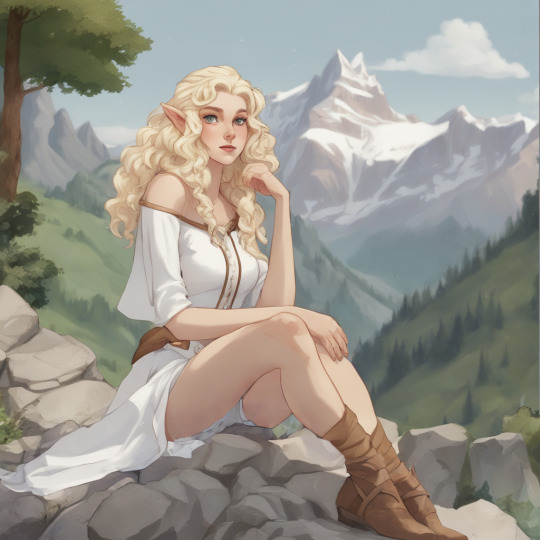
The Saligen
The myth of the Saligen predates Christianization and most likely even Germanic, Slavic and Roman rule of the Alpine territories.
These mythical beings appear to share similarities with creatures like the Bretonic Korrigan and the Welsh Tylwyth Teg. Moreover, they also exhibit some commonalities with the Norse Huldra and the Roman Faun, primarily through their close association with nature.
As they are sociable and not solitary beings, they are often counted among the Germanic elves or Celtic fairies, though unlike these, the Saligen are not small, but instead approximately human-sized. Therefore, they are sometimes seen as half-gods instead. In contemporary folklore, the Saligen are interpreted either as the offspring of elves and humans, thereby suggesting the existence of male Saligen, or as enchanted princesses.
Given their remarkable similarity to the elves from "Lord of the Rings", one might speculate that J.R.R. Tolkien drew inspiration from the Saligen.
Appearance
The Saligen are exclusively depicted as female beings. They are usually described as tall, exceptionally beautiful, and having blonde hair. The Saligen are often portrayed wearing loose, white dresses.
Behaviour
The Saligen are usually thought of as shy, kind-hearted, and wise individuals. They tend to stay hidden from regular people. However, if someone needs help, the Saligen are quick to offer assistance.
Some stories mention that one should avoid encountering a Saligen during full moon, as unlucky individuals who cross paths with them are seduced to spend the night together. Those who fall victim to this encounter are left as soulless bodies.
Saligen are said to live either in caves or underground villages surrounded by a wooded environment to conceal their entrances or in ice palaces.
These beings possess some magical abilities, but unlike elves and dwarves, they cannot simply disappear or become invisible in front of humans. However, there is a belief that they, and even their spouses, are invisible until they initiate a conversation with someone. It is not known how they become invisible again.
Origin
The Saligen are also known as Salkweiber, Salaweiber, Antrische Dirn (Antric Girl), Schneefräulein (Snow Girls), Bergfrauen (Mountain Women), wilde Frauen (Wild Women) and weiße Frauen (White Women).
The term Saligen comes either from Old Bavarian sālīg (kind-hearted, blessed) or is related to modern Bavarian Seäl (soul). Also, an origin from the Suleviae, a group of celtic godesses attested in many inscriptions in Noricum, has to be considered.
Antrisch (in Antrische Dirn) could be a cognate to Old English entisc (gigantic, mysterious) or a borrowing from Latin antrum (cave).
5 notes
·
View notes
Text

© Martin Huber - Barchtl and Nikolo at Miglo day
The Bad Mitterndorfer Nikolo play is a historical custom in the Hinterberg Valley, which with its villages belongs entirely to the market town of Bad Mitterndorf in the Styrian Salzkammergut in Austria. For 150 years, a spectacle has been taking place in Bad Mitterndorf on Miglo day, the evening of 5 December.
#barchtl#nikolo#saint nicholas#st. nicholas#salzkammergut#austria#nikolospiel#custom#miglo#krampus#bad mitterndorf#hinterberger tal#hinterberg#ausseerland#alps#folklore#austrian folklore#austrian custom#austrian culture#alpine folklore#alpine custom#alpine culture#pagan folk#paganism#european pagans#wilder mann#wild man#hombre salvaje#homme sauvage#miglotag
0 notes
Text

Beast Blood
Finally after x-many years I managed to draw Nikolai's TRVE Eldritch humanoid form. I teased that occasionally in some of his portraits, but honestly, I wasn't ever really happy with the early designs of this form, which were all a bit too furry or animal-like, so i didn't post them anywhere… and what I wanted to go for was a witchy forest spirit vibe á la the Percht (sometimes also referred to as Lady Perchta / Berchta), which is part of my local Austrian folklore.
#dark art#art#my art#nikolai#folklore inspired#austrian folklore#eternal#digital artwork#not ai generated#half eldritch#monster#creature
0 notes
Text
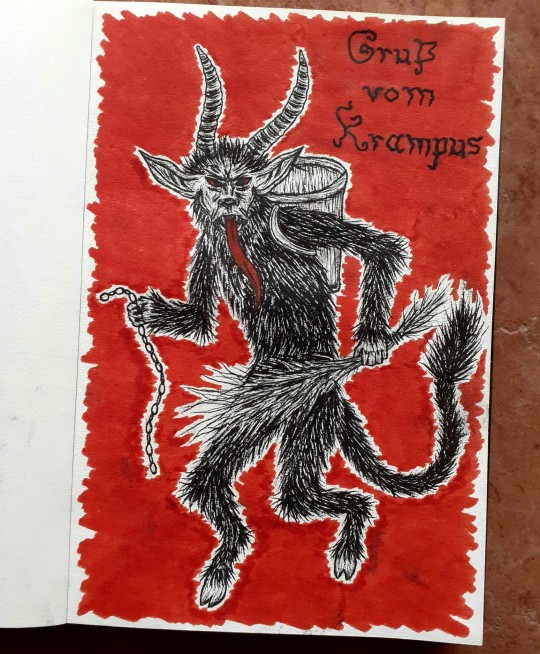
Merry Krampusnacht 👹⛓
#krampus#krampusnacht#gruss vom krampus#greetings from krampus#krampus art#austrian folklore#german folklore#folklore#folklore art#creature art#creature drawing#creature illustration#creepy art#creepy drawing#creepy illustration
11 notes
·
View notes
Text

Folklore festival in Zenica, Bosnia and Herzegovina
Austrian vintage postcard
#tarjeta#herzegovina#postkarte#postkaart#vintage#bosnia#festival#zenica#austrian#herzegovina austrian#sepia#photo#postcard#postal#historic#briefkaart#carte postale#ephemera#ansichtskarte#folklore#photography
12 notes
·
View notes
Text
Alpine Aesthetics
﹌﹌﹌﹌﹌﹌﹌﹌﹌﹌﹌﹌﹌﹌﹌﹌﹌﹌﹌﹌﹌﹌﹌﹌





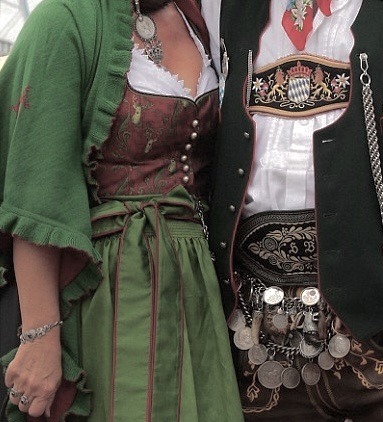
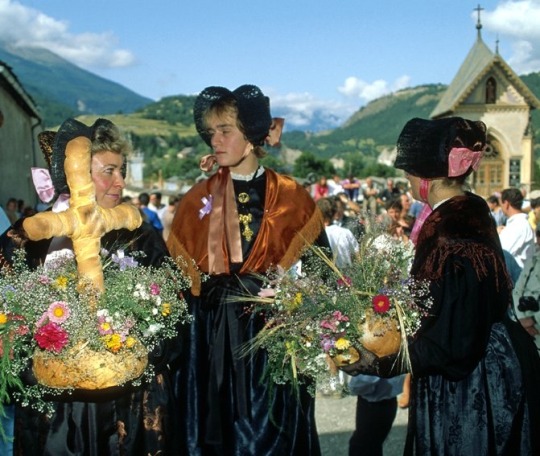

﹌﹌﹌﹌﹌﹌﹌﹌﹌﹌﹌﹌﹌﹌﹌﹌﹌﹌﹌﹌﹌﹌﹌﹌
#aesthetic#alps#swiss alps#austrian alps#bavaria#french alps#slovenian alps#culture#european history#europe#european culture#tracht#dirndl#alpine#mountains#folk costume#folklore
9 notes
·
View notes
Text




"I'll Be Back" 😉
#ai#aiart#gayart#digitalart#midjourney#lgbt#queerart#aithirsttrip#gaymen#lederhosen#austrian#alpine#leather#chubby#folklore
2 notes
·
View notes
Text
My Märchenwald jewelry collection will go live this Sunday, October 6th 🌿🧚♀️ It’s been a pleasure to bring this to life! I’ve used more plants and organic materials in this collection than I ever have before, and I love how everything turned out. I might even have another 3 or 4 pieces I can finish up in time, but I will have everything pictured for sure.
Plants from my local forest and my home garden come together with high quality natural stones to bring this fairy tale forest collection to life. I was deeply inspired by Austrian folklore, specifically the folklore from the alpine region I live in. It’s been so fun to share these folktales with you as I worked on the collection, and this has really given me so many ideas for future collections as well. Let me know which piece calls to you! 🌿
259 notes
·
View notes
Text
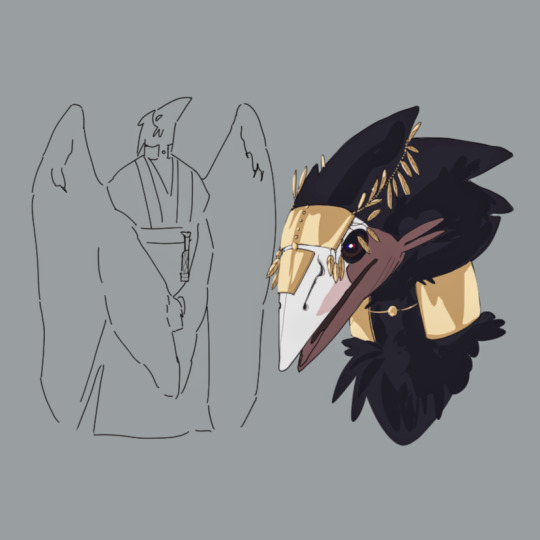

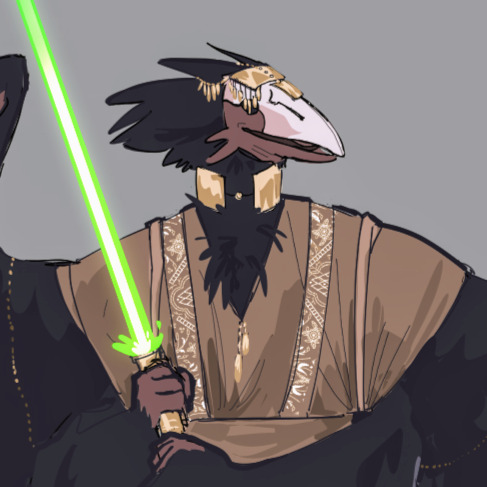
Bird alien for your consideration! This is Jedi Knight Tuwa of the Kra species, professionally unsettling 7' flightless voice mimic and the strangest angel you'll ever meet
This little guy is based on the German/Austrian folklore creature called Nachtrabe (or various spellings of Nachtkrabb depending on the region)
I've grown up with stories of giant raven-like beings appearing on the windowsill of children to either sing them to sleep and send beautiful dreams or to stare at them through the glass and give them nightmares if they've been naughty (lmao)
Wikipedia has also told me that apparently the Nachtkrabb, in some regions, is said to abduct and eat children who are out at night?? I honestly prefer the sandman-esque version I grew up with over Curfew Bird but I guess you can't have a German folktale without child vore, good job team
#nonbinary corvid species that keep stealing voices <3#tuwa watches the weather forecast every night and changes their voice accordingly#you get used to it#oc: tuwa#my art#star wars
707 notes
·
View notes
Text
Pentiment's Complete Bibliography, with links to some hard-to-find items:
I've seen some people post screenshots of the game's bibliography, but I hadn't found a plain text version (which would be much easier to work from), so I put together a complete typed version - citation style irregularities included lol. I checked through the full list and found that only four of the forty sources can't be found easily through a search engine. One has no English translation and I'm not even close to fluent enough in German to be able to actually translate an academic article, so I can't help there. For the other three (a museum exhibit book, a master's thesis, and portions of a primary source that has not been entirely translated into English), I tracked down links to them, which are included with their entries on the list.
If you want to read one of the journal articles but can't access it due to paywalls, try out 12ft.io or the unpaywall browser extension (works on Firefox and most chromium browsers). If there's something you have interest in reading but can't track down, let me know, and I can try to help! I'm pretty good at finding things lmao
Okay, happy reading, love you bye
Beach, Alison I. Women as Scribes: Book Production and Monastic Reform in Twelfth-Century Bavaria. Cambridge Univeristy Press, 2004.
Berger, Jutta Maria. Die Geschichterder Gastfreundschaft im hochmittel alterlichen Monchtum: die Cistercienser. Akademie Verlag GmbH, 1999. [No translation found.]
Blickle, Peter. The Revolution of 1525. Translated by Thomas A. Brady, Jr. and H.C. Erik Midelfort. The Johns Hopkins University Press, 1985.
Brady, Thomas A., Jr. “Imperial Destinies: A New Biography of the Emperor Maximilian I.” The Journal of Modern History, vol 62, no. 2., 1990. pp.298-314.
Brandl, Rainer. “Art or Craft: Art and the Artist in Medieval Nuremberg.” Gothic and Renaissance Art in Nuremberg 1300-1550. The Metropolitan Museum of Art, 1986. [LINK]
Byars, Jana L., “Prostitutes and Prostitution in Late Medieval Bercelona.” Masters Theses. Western Michigan University, 1997. [LINK]
Cashion, Debra Taylor. “The Art of Nikolaus Glockendon: Imitation and Originality in the Art of Renaissance Germany.” Journal of Historians of Netherlandish Art, vol 2, no. 1-2, 2010.
de Hamel, Christopher. A History of Illuminated Manuscripts. Phaidon Press Limited, 1986.
Eco, Umberto. The Name of the Rose. Translated by William Weaver. Mariner Books, 2014.
Eco, Umberto. Baudolino. Translated by William Weaver. Mariner Books, 2003.
Fournier, Jacques. “The Inquisition Records of Jacques Fournier.” Translated by Nancy P. Stork. Jan Jose Univeristy, 2020. [LINK]
Geary, Patrick. “Humiliation of Saints.” In Saints and their cults: studies in religious sociology, folklore, and history. Edited by Stephen Wilson. Cambridge University Press, 1985. pp. 123-140
Harrington, Joel F. The Faithrul Executioner: Life and Death, Honor and Shame in the Turbulent Sixteenth Century. Farrar, Straus and Giroux, 2013.
Hertzka, Gottfired and Wighard Strehlow. Grosse Hildegard-Apotheke. Christiana-Verlag, 2017.
Hildegard von Bingen. Physica. Edited by Reiner Hildebrandt and Thomas Gloning. De Gruyter, 2010.
Julian of Norwich. Revelations of Divine Love. Translated by Barry Windeatt. Oxford Univeristy Press, 2015.
Karras, Ruth Mazo. Sexuality in Medieval Europe: Doing Unto Others. Routledge, 2017.
Kerr, Julie. Monastic Hospitality: The Benedictines in England, c.1070-c.1250. Boudell Press, 2007.
Kieckhefer, Richard. Forbidden rites: a necromancer’s manual of the fifteenth century. Sutton, 1997.
Kuemin, Beat and B. Ann Tlusty, The World of the Tavern: Public Houses in Early Modern Europe. Routledge, 2017.
Ilner, Thomas, et al. The Economy of Duerrnberg-Bei-Hallein: An Iron Age Salt-mining Center in the Austrian Alps. The Antiquaries Journal, vol 83, 2003. pp. 123-194
Lang, Benedek. Unlocked Books: Manuscripts of Learned Magic in the Medieval Libraries of Central Europe. The Pennsylvania State University Press, 2008
Lindeman, Mary. Medicine and Society in Early Modern Europe. Cambridge University Press, 2019.
Lowe, Kate. “’Representing’ Africa: Ambassadors and Princes from Christian Africa to Renaissance Italy and Portugal, 1402-1608.” Transactions of the Royal Historical Society Sixth Series, vol 17, 2007. pp. 101-128
Meyers, David. “Ritual, Confession, and Religion in Sixteenth-Century Germany.” Archiv fuer Reformationsgenshichte, vol. 89, 1998. pp. 125-143.
Murat, Zuleika. “Wall paintings through the ages: the medieval period (Italy, twelfth to fifteenth century).” Archaeological and Anthropological Sciences, vol 23, no. 191. Springer, October 2021. pp. 1-27.
Overty, Joanne Filippone. “The Cost of Doing Scribal Business: Prices of Manuscript Books in England, 1300-1483.” Book History 11, 2008. pp. 1-32.
Page, Sophie. Magic in the Cloister: Pious Motives, Illicit Interests, and Occullt Approaches to the Medieval Universe. The Pennsylvania State University Press, 2013.
Park, Katharine. “The Criminal and the Saintly Body: Autopsy and Dissectionin Renaissance Italy.” Renaissance Quarterly, vol 47, no. 1, Spring 1994. pp. 1-33.
Rebel, Hermann. Peasant Classes: The Bureaucratization of Property and Family Relations under Early Habsburg Absolutism, 1511-1636. Princeton University Press, 1983.
Rublack, Ulinka. “Pregnancy, Childbirth, and the Female Body in Early Modern Germany.” Past & Present,vol. 150, no. 1, February 1996.
Salvador, Matteo. “The Ethiopian Age of Exploration: Prester John’s Discovery of Europe, 1306-1458.” Journal of World History, vol. 21, no. 4, 2011. pp.593-627.
Sangster, Alan. “The Earliest Known Treatise on Double Entry Bookkeeping by Marino de Raphaeli.” The Accounting Historians Journal, vol. 42, no. 2, 2015. pp. 1-33.
Throop, Priscilla. Hildegarde von Bingen’s Physica: The Complete English Translation of Her Classic Work on Health and Healing. Healing Arts Press, 1998.
Usher, Abbott Payson. “The Origins of Banking: The Brimitive Bank of Deposit, 1200-1600.” The Economic History Review, vol. 4, no. 4. 1934. pp.399-428.
Waldman, Louis A. “Commissioning Art in Florence for Matthias Corvinus: The Painter and Agent Alexander Formoser and his Sons, Jacopo and Raffaello del Tedesco.” Italy and Hungary: Humanism and Art in the Early Renaissance. Edited by Peter Farbaky and Louis A. Waldman, Villa I Tatti, 2011. pp.427-501.
Wendt, Ulrich. Kultur and Jagd: ein Birschgang durch die Geschichte. G. Reimer, 1907.
Whelan, Mark. “Taxes, Wagenburgs and a Nightingale: The Imperial Abbey of Ellwangen and the Hussite Wars, 1427-1435.” The Journal of Ecclesiastical History, vol. 72, no. 4, 2021, pp.751-777.
Wiesner-Hanks, Merry E. Women and Gender in Early Modern Europe. Cambridge University Press, 2008.
Yardeni, Ada. The Book of Hebrew Script: History, Palaeography, Script Styles, Calligraphy & Design. Tyndale House Publishers, 2010.
557 notes
·
View notes